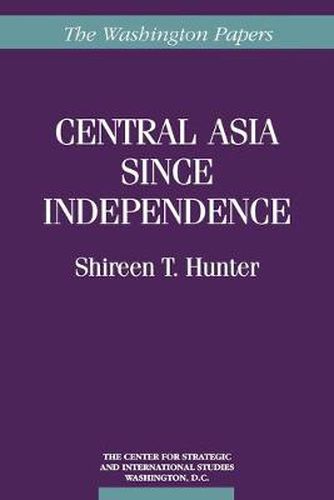Central Asia Since Independence
Shireen T. Hunter

Central Asia Since Independence
Shireen T. Hunter
When the Soviet Union officially ended in December 1991 and was replaced by the Commonwealth of Independent States, the five central Asian republics - Kazakhstan, Kyrgyzstan, Tajikistan, Turkmenistan and Uzbekistan - also became independent. This study examines the course of nationalist, ethnic and pro-independence movements in the Central Asian region since 1991, as well as the geopolitical situation surrounding and involving these new states. Because of differences in size, ethnic composition, historical and cultural characterisics, resource base, and geographical location, these countries’ patterns of evolution during the post-independence period have varied greatly. Nevertheless, during the last few years, certain basic common patterns have emerged, both in the political and economic development of the Central Asian States and in their external relations. These patterns and developments are analysed here by a noted expert in Eurasian studies. Part 1 Internal Dynamics - Challenge and Reform: Central Asia - Historical, Ethnic, Cultural and Geopolitical Context; Political Ideology and Institution-Building; Central Asian Political Systems; Economic Revitalisation and Reform. Part 2 External Relations: Intra-Central Asian Relations; Intra-CIS Relations; Central Asia and its Neighbours; Central Asia and the West.
This item is not currently in-stock. It can be ordered online and is expected to ship in approx 2 weeks
Our stock data is updated periodically, and availability may change throughout the day for in-demand items. Please call the relevant shop for the most current stock information. Prices are subject to change without notice.
Sign in or become a Readings Member to add this title to a wishlist.


